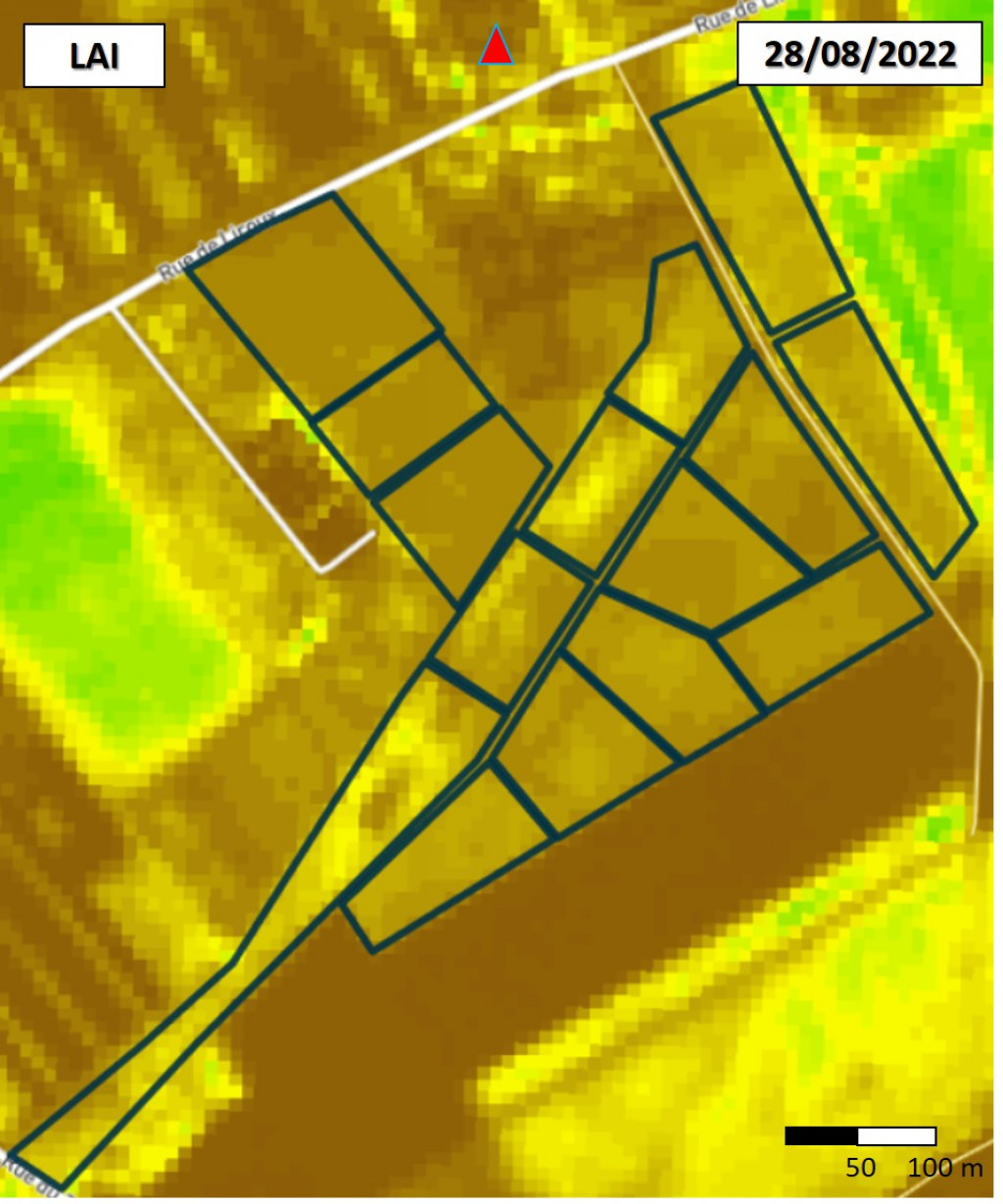Accounting for around half the agricultural land in Wallonia, pastures play a major role in Walloon agriculture. Optimising the management of grassy land is one of the key principles that improves the resilience of farms through greater food and protein autonomy. Grazing plays a predominant role, as grass is the most suitable food for cows, and is the close connection with animal well-being, the quality of the foods produced (milk/meat) and the provision of ecosystem services. Providing optimal grazing for one’s herd requires a good technique and constant adjustment between the supply of grass and the animal’s demand. This may be complicated in the context of climate change, where the occurrence of extreme climate events (e.g. drought, floods) is constantly growing.
The SUNSHINE project aims to provide a solution, combining growth models and satellite information, which enables us to estimate and predict grass growth in the short term, both in terms of quantity and quality. To develop such tools we need to rely on a large dataset that is representatives of the growth and management conditions in Wallonia.
In 2022, no fewer than 16 farms and 56 plots spread over the main production areas were monitored. Using connected herbometers, measurements of compressed grass height were taken on a weekly basis while the biomass and quality of the grass were estimated on a monthly basis. The first results are encouraging. In this way, for example, the satellite images confirmed the absence of growth in many reasons following the summer drought and enabled us to estimate the grass growth over a restricted dataset with an average error of around 1.5cm.
A second intensive campaign is planned in 2023. These estimates of grass growth (quantity/quality) will be incorporated in a decision-making tool providing computerised management of grazing calendars, and, via coordination with existing tools, optimised rationing of grazing.
Gaining a good understanding of breeders’ needs and expectations is vital in defining a decision-making tool of this type. This will be developed in an ‘agile’ manner by maximising interactions with end users (breeders as well the various supporting organisations) at each important stage of its development.

